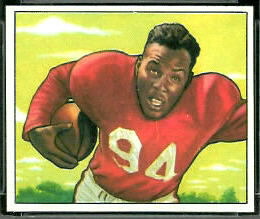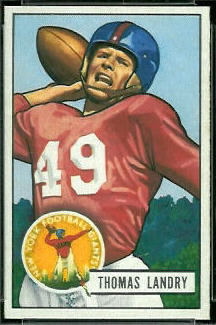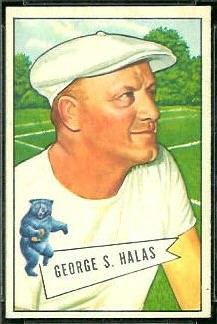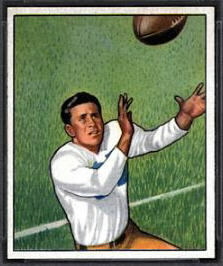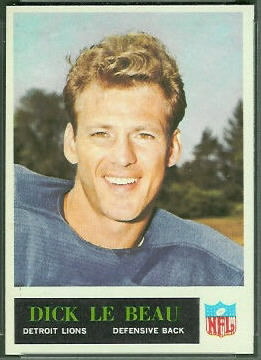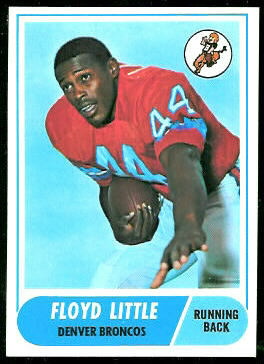Ron Atchison and Frank Rigney, CFL Hall of Famers
July 1st, 2010 | Published in CFL Cards, Halls of Fame, Player Deaths
Two Canadian Football League Hall of Famers, Ron Atchison and Frank Rigney, passed away this week. Both players appeared on numerous CFL football cards. I am not an expert on CFL cards (or on the CFL, for that matter), so I took the opportunity to do some web searching and learn a little.
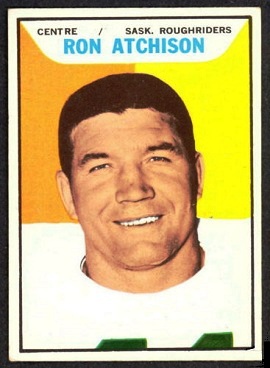 A tribute to Ron Atchison on the Vancouver Sun web site says that he walked-on to the Saskatchewan training camp in 1952, and he ended up playing on the Roughriders defensive line for seventeen years. In that span, the team won one Grey Cup (CFL Championship), in 1966. In one playoff game on an icy field, the resourceful Atchison wore his Hush Puppies for better traction–and they worked!
A tribute to Ron Atchison on the Vancouver Sun web site says that he walked-on to the Saskatchewan training camp in 1952, and he ended up playing on the Roughriders defensive line for seventeen years. In that span, the team won one Grey Cup (CFL Championship), in 1966. In one playoff game on an icy field, the resourceful Atchison wore his Hush Puppies for better traction–and they worked!
Atchison apparently did not play college football, but prior to trying out with Saskatchewan, he played for the Saskatoon Hilltops in the Canadian Junior Football League. The league is still in operation, and, according to its Wikipedia page, it serves as a sort of minor league for the CFL. There are some fun team names among the league’s current nineteen teams, including the Big Kahuna Rams, the Chilliwack Huskers, the London Beefeaters, and the Windsor AKO Fratmen.
The card pictured here is Atchison’s 1965 Topps CFL card. 1965 Topps is probably my favorite CFL set, since the cards are colorful and distinct from their NFL counterparts. (Some CFL cards, such as 1958 Topps, 1962 Post, and 1968 O-Pee-Chee, look just like the NFL cards from those years, so to me they’re not very interesting.) Atchison appeared on many more cards, and although I don’t yet have them, you can see a nice assortment on eBay.
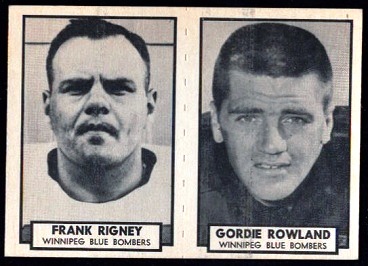 Like Atchison, Frank Rigney spent his entire CFL career with the same team, playing ten years on the Winnipeg Blue Bombers offensive line. In those ten years, Winnipeg played in five Grey Cups and won four of them. Rigney was a CFL West All Star in seven of his ten seasons. He played college football for Iowa, and he was drafted by the Philadelphia Eagles, but I did not find anything that said he reported to the Eagles training camp.
Like Atchison, Frank Rigney spent his entire CFL career with the same team, playing ten years on the Winnipeg Blue Bombers offensive line. In those ten years, Winnipeg played in five Grey Cups and won four of them. Rigney was a CFL West All Star in seven of his ten seasons. He played college football for Iowa, and he was drafted by the Philadelphia Eagles, but I did not find anything that said he reported to the Eagles training camp.
Pictured here is Rigney’s 1962 Topps CFL card, half of a panel he shared with teammate Gordie Rowland. The two-card panels in this set are the size of standard single cards. Rigney appeared on many more cards, as well as on some Nalley’s Coins, and you can see examples of them on eBay.
Rigney’s obituary on the CBC News web site provides a nice summary of his career.

